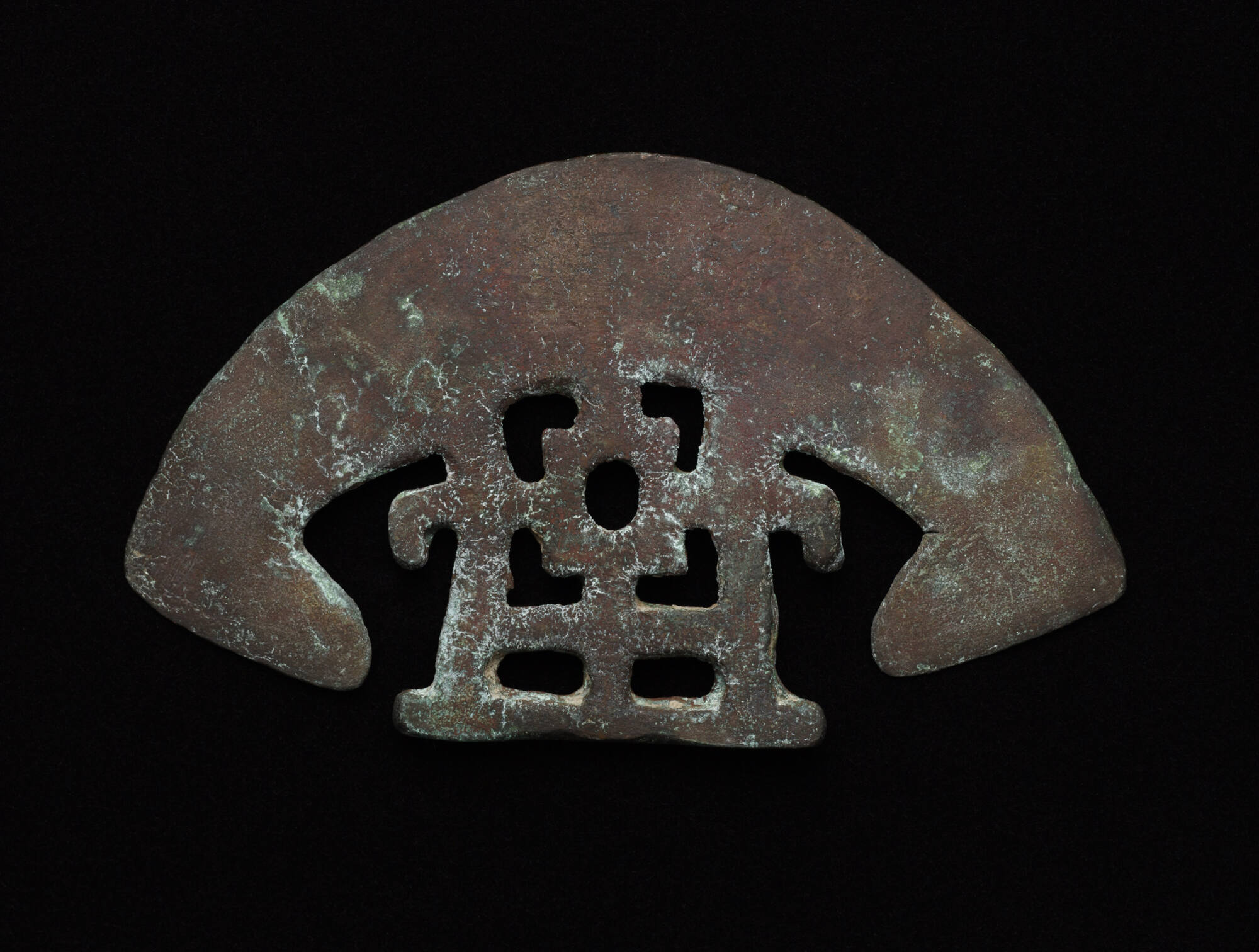
Object Details
Culture
Milagro (Ecuador)
Date
ca. 500 A.D.
Medium
Copper
Dimensions
3 1/4 x 5 1/2 inches (8.3 x 14 cm)
Credit Line
Gift of Peggy and Tessim Zorach
Object
Number
86.026.007
BRIEF DESCRIPTIONThis is a blade from a Milagro “tumi” knife made of copper. The word tumi descr(…)
BRIEF DESCRIPTIONThis is a blade from a Milagro “tumi” knife made of copper. The word tumi describes a style of metal knife with a curved blade made in pre-Columbian times.WHERE WAS IT MADE?This knife blade was made in the southern coastal region of what is now Ecuador.HOW WAS IT MADE?This knife blade was made from a sheet of copper. Copper was the most common metal in the pre-Columbian Americas. In earliest times, artifacts made of copper were made by cold-hammering naturally occurring meteoritic metal, but as technology improved, smelting and smithing of the metal became more common. Although copper was more common than gold, and was made into more utilitarian-appearing objects such as axes and weapons, the soft nature of copper means that it wasn’t as useful as stone tools for many purposes. Like gold, copper was a status symbol, since it was considerably more rare and precious than ceramic or stone. Most copper artifacts are actually mixtures of several metals, known as alloys.HOW WAS IT USED?Notice the openwork design on the handle of this crescent-shaped copper “tumi” knife blade. Semi-lunar knives of this shape were made of both stone and metal, and were used to chop vegetables and other foods in curved wooden bowls.WHY DOES IT LOOK LIKE THIS?The curved shape of this knife blade served a practical purpose. We do not know what, if any, significance the openwork design had to the people who made or used this object.ABOUT THE MILAGRO CULTURE:The Milagro/Quevedo culture flourished in an extensive territory within the Guayas River drainage. The dispersed settlements were built on mounds raised to avoid the frequent inundations from seasonal flooding. Raised fields were built up a meter or more above the natural ground surface to improve drainage for crops; approximately 50,000 hectares of raised fields were laboriously constructed in the Guayas River drainage. Although generally discussed as one entity, this cultural grouping actually combines the remains of two similar culture traditions: the more ornate Quevedo to the north and Milagro to the south. The presence of applied raised-relief animals such as frogs, lizards, snakes, and birds is characteristic of Milagro/Quevedo pottery. This culture is also renowned for its metalwork, especially for its copper “hachas monedas” (money axes), small standardized axe-shaped ingots used as a medium for exchange. This rich metalworking tradition was established in a region lacking in metal sources; gold and copper were obtained through trade.












